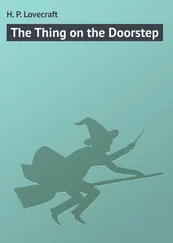DAVE FANNING
the thing is...
with Ian Gittins


Copyright
Collins
An imprint of HarperCollins Publishers Ltd. 1 London Bridge Street London SE1 9GF www.harpercollins.co.uk
Text © Dave Fanning 2010
The author asserts his moral right to be identified as the author of this work
A catalogue record for this book is available from the British Library
All photographs courtesy of the author with the exception of the following:
Picture section 1 : p4, bottom, © Colm Henry Picture section 2 : p2, middle, © Amelia Stein; p6, top, © Edmund Ross Studios; p7, bottom right, © Mark O’Sullivan
All rights reserved under International and Pan-American Copyright Conventions. By payment of the required fees, you have been granted the non-exclusive, non-transferable right to access and read the text of this ebook on-screen. No part of this text may be reproduced, transmitted, down-loaded, decompiled, reverse engineered, or stored in or introduced into any information storage and retrieval system, in any form or by any means, whether electronic or mechanical, now known or hereinafter invented, without the express written permission of HarperCollins ebooks
HarperCollins Publishers has made every reasonable effort to ensure that any picture content and written content in this ebook has been included or removed in accordance with the contractual and technological constraints in operation at the time of publication
Source ISBN: 9780007310760
EPub Edition © 2010 ISBN: 9780007412402
Version: 2017-07-27
For Annie and Barney
Cover
Title Page DAVE FANNING the thing is... with Ian Gittins
Copyright
Foreword
Introduction
Chapter 1
Chapter 2
Chapter 3
Chapter 4
Chapter 5
Chapter 6
Chapter 7
Chapter 8
Chapter 9
Chapter 10
Chapter 11
Chapter 12
Chapter 13
Chapter 14
Chapter 15
Photographic Insert 1
Photographic Insert 2
Acknowledgments
About the Author
About the Publisher
Foreword
By Bono
When you are 17 and in a band, you don’t wear stage gear. You want the off-stage look to be the same as on stage. Our band nearly broke up in its first year because Larry Mullen turned up wearing flares for the first photo session and refused to change. This was the post-punk New Wave scene. There were very strict rules about what you could and couldn’t do – like have a beard, for instance. Dave Fanning had a beard. And kind of curly corkscrew hair. In this very tome, he admits – for a period – to looking like Catweazle. We were too young and naive to realise that playing punk rock music and looking like Catweazle was a very punk rock thing to do. In ’77/’78, you could count the people in this new scene in the hundreds, not the thousands. We had a sign up to announce ourselves. Dave Fanning didn’t bother.
From the very beginning, Dave Fanning was always going his own way, a stubborn river appearing to meander, when in fact he was really just finding the most efficient way around the mountain. He is not serene, our Dave. His conversation is more white-water rafting … ideas percolate … he tests them out on you, wondering who will capsize first … It’s a furtive intelligence; a very fast and furious brain, given to a boy and a character with impeccable manners and grace. His nervous laugh is for you, not him, filling in the spaces where the interviewee can die. The thing is, he gets to the point. He does not waste your time. And when it comes to music, he embodies the difference between wisdom and knowledge. It’s not just that he knows a lot. It’s more that he understands what’s beneath the surface of the song and can see it more clearly. I’d say his greatest joy – apart from sitting at the feet of the masters (in his case, Bob Dylan and Joni Mitchell) – is the joy of discovery … watching a new talent surface. He sees the silverfish under the water, pulls them out, interviews them, and puts them back, their direction more sure after meeting him.
He is a mysterious figure, and has metamorphosed over the years. His ‘expose the process’ shtick – and candour on the radio – meant everyone else looked manufactured and crowd-pleasing. Dave was crowd pleasing too. But it was his crowd. And they spoke a different language. They demanded no crap. And when they stopped demanding that he shave his beard, Dave Fanning shaved his beard. Read here about his transformation from the phenomenon that was pirate radio in the early Eighties to launching the first Dave Fanning show on the national airwaves. It felt like revolution because it was a revolution. Ireland was about to crawl out of the primordial mud of its history, and specifically the torpor of depression that was Dublin in the Seventies. Music was an alarm clock for a lot of us. Do-it-yourself bands/radio stations suddenly became do-it-yourself businessmen, economists … a do-it-yourself country emerged. This was not all great, but it was a lot better than we had ever known. Every song released in this time became like a national anthem. When Thin Lizzy played hard rock on Top of the Pops , when the Boomtown Rats got to No. 1 in the UK charts … it was like the Battle of Britain had been won by Ireland.
For a lot of us this was zero hour, when the clock started ticking. And it didn’t really slow down until very recently. Dave’s mate, Gerry Ryan, was the nation’s therapist … through the good times and into the bad times. For a lot of people, Dave Fanning was the Samaritans, the quiet voice, who alone could understand the pain you were in … at having to listen to chart music.
Radio is a not well-understood medium. Its power is its ubiquity; its currency is intimacy. Dave Fanning whispers louder than most men shout. He is all over this island of Ireland and listened to in the furthest corners of the world. The size of his reach is extraordinary, but what’s more extraordinary is his very intimate relationship with people who love music on the radio.
When he chose to move to television, he chose a whole new world – stealing away from the mysteries of radio. This world requires a certain humility – one that’s easily lost in a world where you can see the wires, where you know how the sausages are made, how the figs get into the fig roll. Dave Fanning knows the magician has put the rabbit in his top hat before he walks out on stage – he was standing beside him as he did it. But Dave is still enraptured as the rabbit is revealed. Suspension of disbelief is the key component in the appreciation of all art, high or low.
The Muse often prefers a fresh face, as gauche as a confirmation suit or a pretend safety pin through the nose of a 17-year-old boy. Sometimes the Muse gets bored with the worldly wise and lets curious youth in her window. When our band was 17 and 18, it must have been a source of fascination for Dave, watching the Muse hang out with our band. Is She Really Going Out With Him? But he delighted over it and magnified it to a wider world, as he did with the Undertones and so many others who were just getting started.
Introduction
The Thing Is … you should always get to the point. If there is one thing I have learned in more than thirty years of broadcasting, it is that. People may listen to me on the radio or watch me on TV but it is not because they love the sound of my voice; far from it. They tune in because they want to be entertained.
Читать дальше













